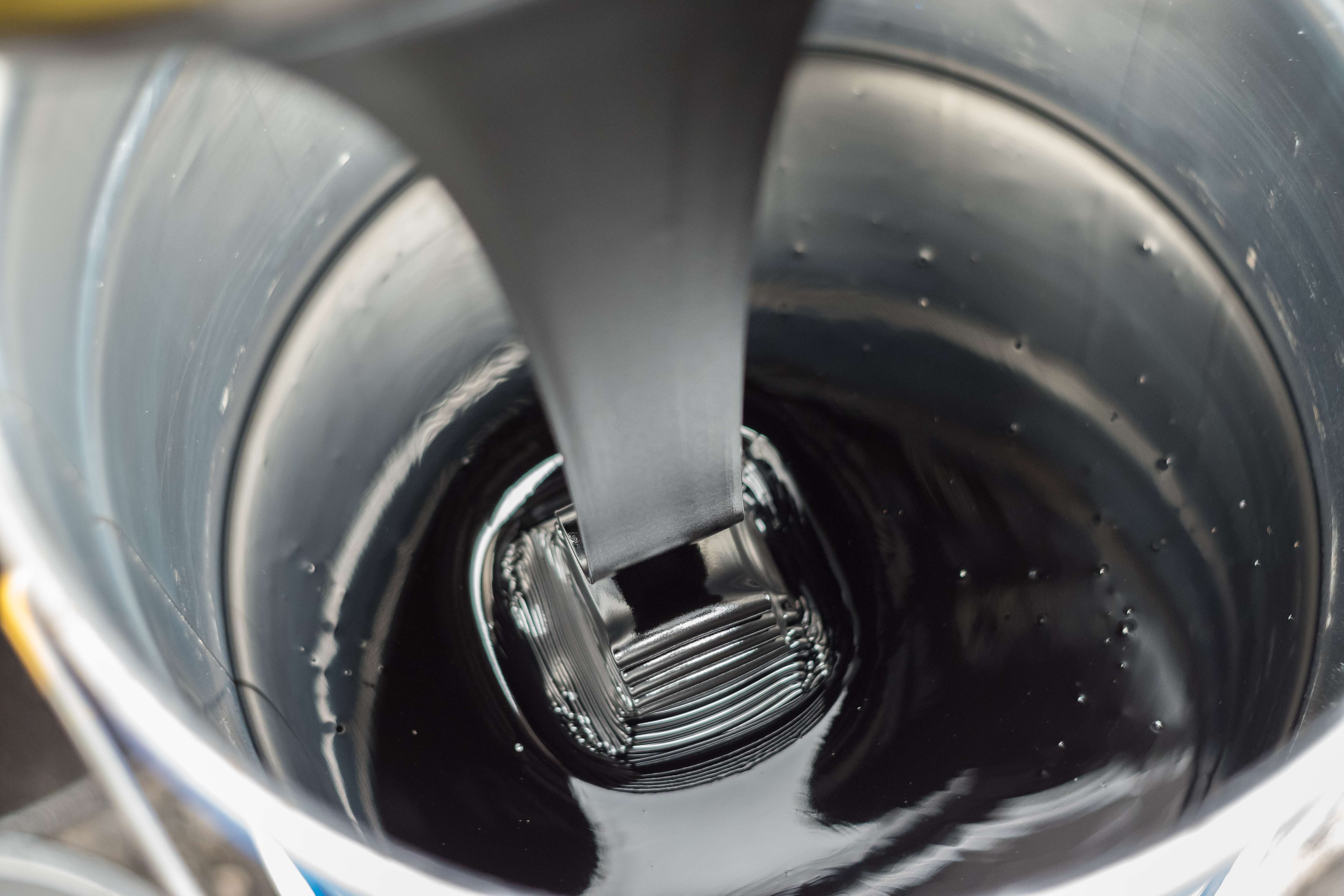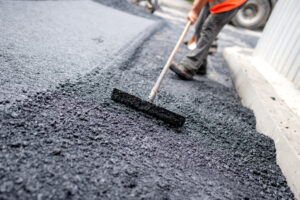You’ve seen bitumen, even if you didn’t know it. It’s under your tires on highways, beneath your feet in parking lots, and layered into waterproof roofs. But what is it, really? Bitumen is a key ingredient in modern construction. It’s durable, adhesive, and built to withstand pressure and time. Still, many confuse it with asphalt or overlook its role in everyday infrastructure. In this post, we break down what bitumen is, how it’s made, the different types, and why it matters. You’ll learn how it’s tested, where it’s used, and how it compares to similar materials. Whether you’re managing a paving project or just curious, this guide will give you a solid understanding of bitumen’s purpose and performance.
What is Bitumen and Why is it Important?
Bitumen is a black or dark brown sticky substance that can be found naturally or derived from crude oil. It’s highly dense and waterproof, making it a great candidate for the binder in road construction and the sealing material in roofing. When people refer to bitumen in construction, they’re usually talking about the refined version that goes through petroleum processing.
Origins: Bitumen has been used for thousands of years. Ancient Mesopotamians used natural bitumen (also called “pitch” or “tar”) for waterproofing boats and buildings. Today’s version is almost always a byproduct of crude oil refining—the leftovers of extracting gasoline, diesel, and other lighter fractions. That being said, Bitumen isn’t waste; it’s incredibly valuable in its own right.
Importance in Infrastructure: Modern infrastructure would fall apart (literally) without bitumen. It’s needed for asphalt production, which consists of bitumen mixed with aggregates like gravel and sand. Roads, highways, airport runways, parking lots, and even racetracks depend on the sticky substance. Bitumen also waterproofs buildings, bridges, and tunnels. Without it, water damage would tear apart many of the structures we rely on. Its role is silent but critical, binding, protecting, and extending the life of the surfaces we walk and drive on every day.
Even though most of us rarely think about bitumen in our day-to-day lives, it’s the glue that keeps many of our buildings standing strong and pavement sturdy. Next, we’ll go over the manufacturing process of the ubiquitous binder.
How is Bitumen Made?
Modern-day bitumen doesn’t come out of the ground in its usable form. It’s the product of a couple of important steps during the final stages of crude oil distillation in a refinery.
Crude Oil Distillation: The process starts with heating crude oil in a distillation column. As the oil heats, its components separate based on their boiling points. The lighter hydrocarbons rise to the top (where gasoline, kerosene, and diesel are collected), and the heavier fractions settle at the bottom. Bitumen is the thick residue left over.
Vacuum Distillation: To further refine this residue, it’s sent through a vacuum distillation process, which uses reduced pressure to separate heavier oils from the bitumen. This step increases the purity and performance of the bitumen.
Air Blowing (Oxidized Bitumen): In some cases, air is bubbled through hot bitumen in a controlled process to make oxidized (or blown) bitumen. This form is more rigid and can withstand higher temperatures, making it perfect for industrial roofing and waterproofing applications. It’s also used in pipe coatings and adhesive compounds.
This manufacturing process can be tuned to control the viscosity, durability, and application-specific properties of the final product.
Types of Bitumen and Their Applications
Bitumen isn’t one-size-fits-all. It’s classified based on certain properties, like penetration, viscosity, and temperature sensitivity.
Classification Systems
The two main classification methods are:
- Penetration Grade: Measures how deep a standard needle (100g) can penetrate the bitumen at a set temperature, usually 25°C. A higher penetration number means softer bitumen.
- Viscosity Grade: Measures how resistant bitumen is to flow under high temperatures. It’s considered more reliable for hot climates where penetration grading falls short.
- Performance Grade (PG): This classification is used in Superpave systems in North America. PG grades are based on the temperature range the bitumen can handle without failing.
Key Types of Bitumen
- Straight-run Bitumen: This is the basic form obtained from distillation without modification. It’s mainly used in paving and is available in various penetration grades like 60/70 or 80/100.
- Oxidized Bitumen: As mentioned earlier, this type of bitumen is produced via air-blowing. It’s more brittle but highly resistant to flow at high temperatures.
- Polymer-Modified Bitumen (PMB): Regular bitumen can be blended with polymers like styrene-butadiene-styrene (SBS) to boost its elasticity, durability, and resistance to extreme temperatures. It works best for high-performance roads and bridge decks.
- Cutback Bitumen: This is bitumen diluted with a solvent to lower its viscosity, making it easier to apply in cold climates. The solvent eventually evaporates.
- Emulsified Bitumen: Emulsified bitumen is a mixture of bitumen, water, and emulsifying agents. These allow the bitumen to be used at lower temperatures, and are commonly applied for road maintenance and surface dressing.
Application Use Cases
- Road Construction: Bitumen binds aggregates in asphalt mixes. Different grades are used depending on the traffic load and climate.
- Roofing and Waterproofing: Oxidized bitumen and PMB are used for roofing systems and waterproof membranes.
- Industrial Applications: Includes pipe coatings, soundproofing materials, and adhesives. The thermal tolerance and stickiness of bitumen make it useful across various industrial applications.
There are many types of bitumen, and they’re graded to define their temperature resistance and performance. It’s important to note that bitumen is not the same material as asphalt, although they appear similar.
Bitumen vs Asphalt: What’s the Difference?
People often use the terms interchangeably, but they’re not the same.
- Bitumen is the binder. It’s a pure product, derived from crude oil.
- Asphalt is the finished product used in paving, a mixture of bitumen and aggregate (gravel, crushed stone, sand).
So, while bitumen is an ingredient in asphalt, it’s not the asphalt itself. Those gravel bits and other aggregates make up about 95% of its mass. In construction lingo, workers may refer to “laying asphalt,” but what they’re really spreading is a mixture of bitumen and stone. The ratio, temperature, and mixing methods affect the final road quality.
Asphalt is engineered for performance, while bitumen is selected based on how well it’ll hold that mix together under traffic, heat, and time. For asphalt surfaces, maintenance is key for protecting the bitumen and keeping the surface strong.
Let Superior Asphalt Maintain Your Asphalt Surface
Bitumen is more than a paving material; it’s the backbone of roads, roofs, and infrastructure systems worldwide. It binds, seals, and protects. Its performance depends on the type, grade, and how it’s applied. Now you know what bitumen is, how it’s made, and why it’s trusted in so many industries. From its role in asphalt to its place in waterproofing, it’s a material that delivers strength and longevity. Need help with your asphalt maintenance? Superior Asphalt offers expert repair and resurfacing services across Utah. Contact us today for a custom quote tailored to your property; we’ll help you protect your investment from the ground up.



